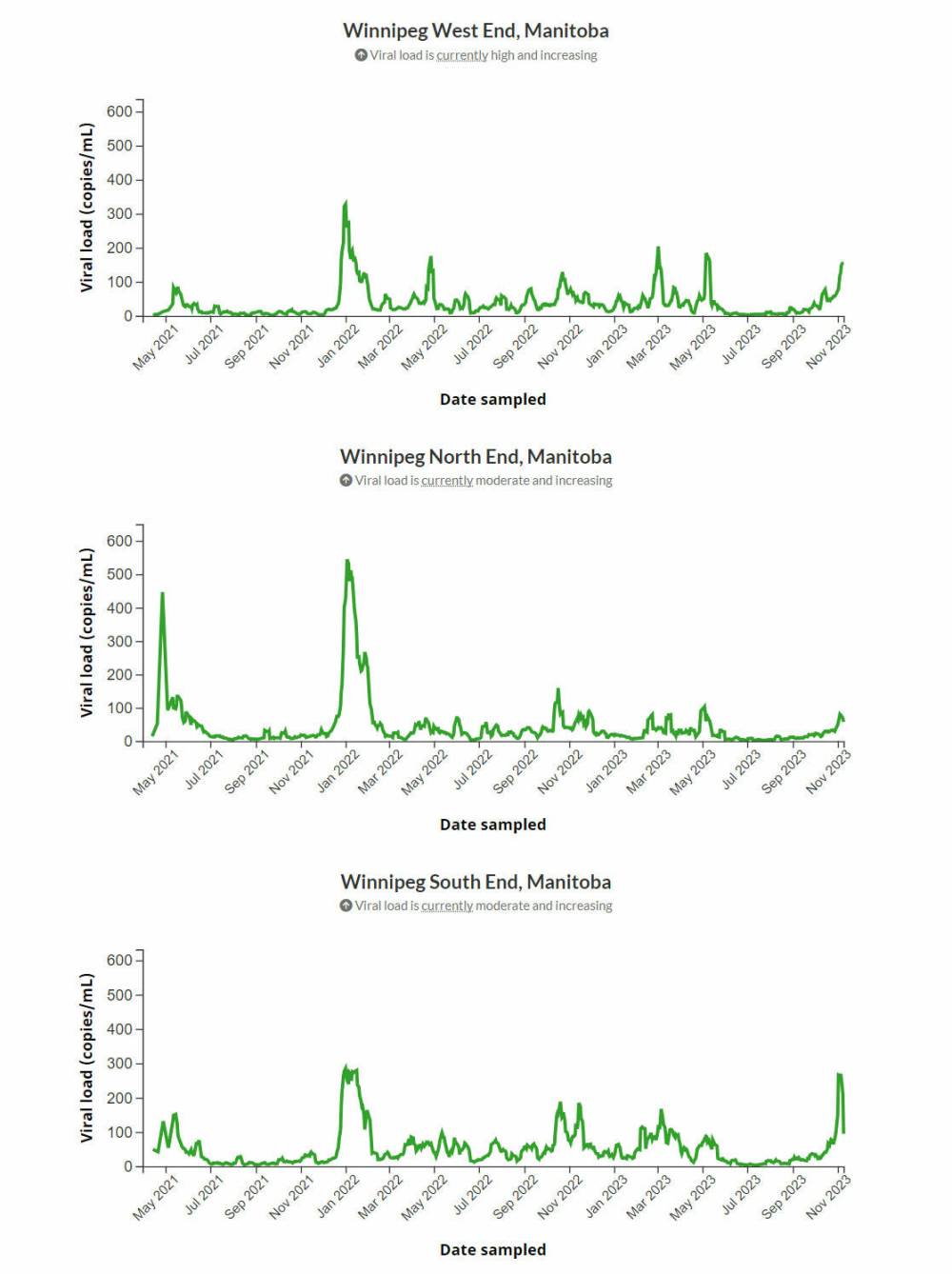COVID levels in wastewater rising as flu season looms
Advertisement
Read this article for free:
or
Already have an account? Log in here »
To continue reading, please subscribe:
Monthly Digital Subscription
$1 per week for 24 weeks*
- Enjoy unlimited reading on winnipegfreepress.com
- Read the E-Edition, our digital replica newspaper
- Access News Break, our award-winning app
- Play interactive puzzles
*Billed as $4.00 plus GST every four weeks. After 24 weeks, price increases to the regular rate of $19.00 plus GST every four weeks. Offer available to new and qualified returning subscribers only. Cancel any time.
Monthly Digital Subscription
$4.75/week*
- Enjoy unlimited reading on winnipegfreepress.com
- Read the E-Edition, our digital replica newspaper
- Access News Break, our award-winning app
- Play interactive puzzles
*Billed as $19 plus GST every four weeks. Cancel any time.
To continue reading, please subscribe:
Add Free Press access to your Brandon Sun subscription for only an additional
$1 for the first 4 weeks*
*Your next subscription payment will increase by $1.00 and you will be charged $16.99 plus GST for four weeks. After four weeks, your payment will increase to $23.99 plus GST every four weeks.
Read unlimited articles for free today:
or
Already have an account? Log in here »
Hey there, time traveller!
This article was published 17/11/2023 (708 days ago), so information in it may no longer be current.
Manitoba’s test positivity rate for COVID-19 is nearing 30 per cent and flu infections are also on the rise.
Levels of COVID detected in municipal wastewater are increasing in Winnipeg and Brandon, and the latest provincial data showed active viral outbreaks in local hospitals and long-term care residences.
It’s clear the region in the thick of another wave of transmission, said Winnipeg medical microbiologist Dr. Philippe Lagacé-Wiens.
“Seeing COVID and influenza at the same time is never good news for the hospital,” he said Friday, urging eligible Manitobans to get flu shots and COVID boosters — regardless of the manufacturer brand name.
“The best vaccine you can get is the one you can get in your arm today, because we’re just at the cusp of influenza (season) and we’re in the heat of COVID-19. Ideally, we should have been getting our vaccines a week or two ago, just to make sure our antibody levels are really high… Failing that, we should get it ASAP.”
Trend graph of seven-day rolling average of COVID-19 viral load in wastewater, as of November 9, 2023. (Health Canada)
Although lab tests for COVID are primarily only administered for hospital patients rather than the general population, the high test positivity rate is a sign there’s already significant transmission of COVID-19 in the community.
When flu season hits, it typically happens fast, making a lot of people sick at the same time, Lagacé-Wiens added.
“We can overwhelm an already stressed hospital system, and we’ve been hearing for the past year-and-a-half or longer how stressed the hospital systems are even without the pandemic… What we anticipate as health-care providers is a very sudden and sharp increase in influenza cases and associated hospitalizations,” he said.
The most recent provincial respiratory virus surveillance report shows there were 256 COVID and 30 influenza cases recorded during the week of Nov. 5-11. There were 59 hospitalizations and three intensive care admissions associated with COVID.
A provincial spokesperson acknowledged the increase in viral transmission, stating Friday: “Increases in COVID-19, along with other respiratory viruses, are expected as people gather inside as the weather cools. Manitobans can protect themselves and reduce the spread of respiratory viruses by getting vaccinated, staying home when sick, washing hands or using an alcohol-based hand sanitizer frequently, covering coughs/sneezes, wearing a mask in indoor public spaces, knowing if you are eligible for treatment, and cleaning and disinfecting frequently touched surfaces.”
Reinstated mask requirements for health-care workers who are interacting with patients came into effect Oct. 18. However, the same rules don’t apply to hospital visitors.
With hospital outbreaks still happening, it suggests the novel coronavirus is entering health-care facilities via community transmission.
“It would be a courtesy to reduce that risk, not come into a hospital if you’re feeling sick and wear a mask to reduce the risk of accidentally infecting somebody if you’re in the early stages of an infection yourself,” Lagacé-Wiens said.
katie.may@winnipegfreepress.com

Katie May is a multimedia producer for the Free Press.
Our newsroom depends on a growing audience of readers to power our journalism. If you are not a paid reader, please consider becoming a subscriber.
Our newsroom depends on its audience of readers to power our journalism. Thank you for your support.





